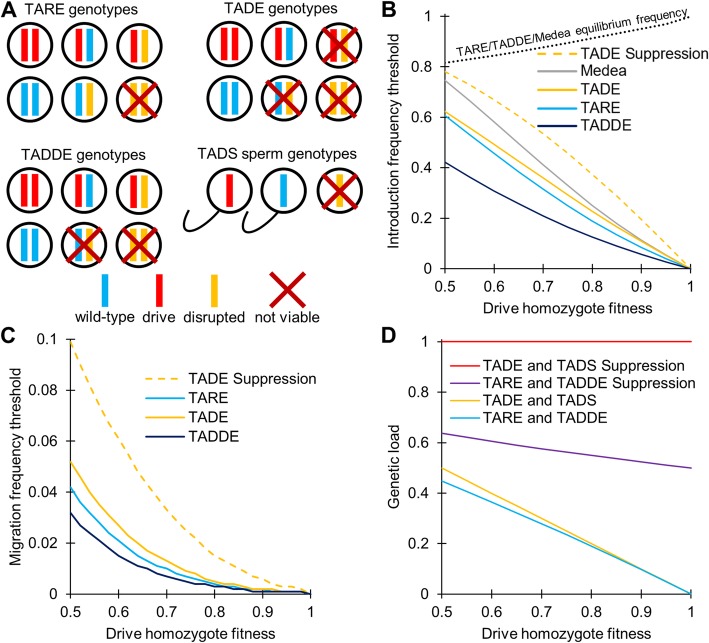Fig. 1.
Overview of TA systems and performance characteristics. a Illustration of viable and nonviable genotypes for the different types of TA systems. b TARE, TADE, TADDE, and Medea drives have fitness-dependent introduction thresholds, above which the drive will increase in frequency and below which it will decrease. Frequencies represent the introduction of drive heterozygotes (with “ideal” drives in the deterministic model). The black dotted line shows the final drive allele equilibrium frequency for TARE, TADDE, and Medea, though all individuals should carry at least one copy of the drive at these equilibria. c Migration thresholds for the different TA systems, showing the per generation influx of new migrants (homozygotes for TARE, TADE, and TADDE, heterozygotes for TADE suppression) as a fraction of the population that is required for the drive to eventually spread to all individuals in the population (below this level, the drive reaches a low equilibrium frequency). Note that these thresholds likely overestimate the invasion potential of a TADE suppression system, since suppression and subsequent reduction in migration will occur in distant populations that send migrants as the drive increases in frequency. d The genetic load imposed by idealized TA drives as a function of the drive homozygote fitness in the deterministic model. Eradication will only occur if the genetic load can overcome the fitness advantage of individuals at low population density. Note that “TARE and TADDE suppression drive” refers to a distant-site TARE or TADDE drive located in a female fertility gene (as in a TADE suppression drive). Such a drive reaches a moderate equilibrium frequency and is thus unable to impose a large genetic load on the population like a TADE suppression drive

